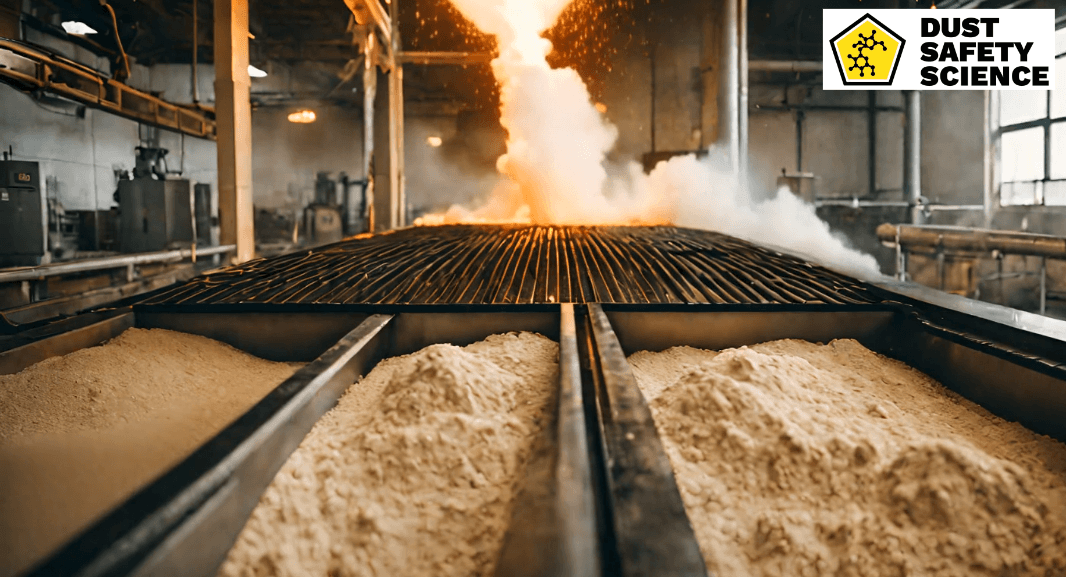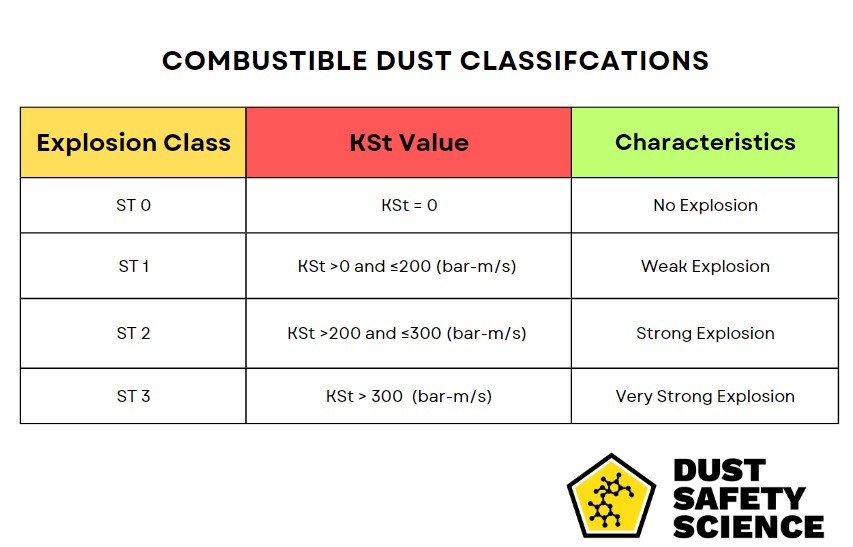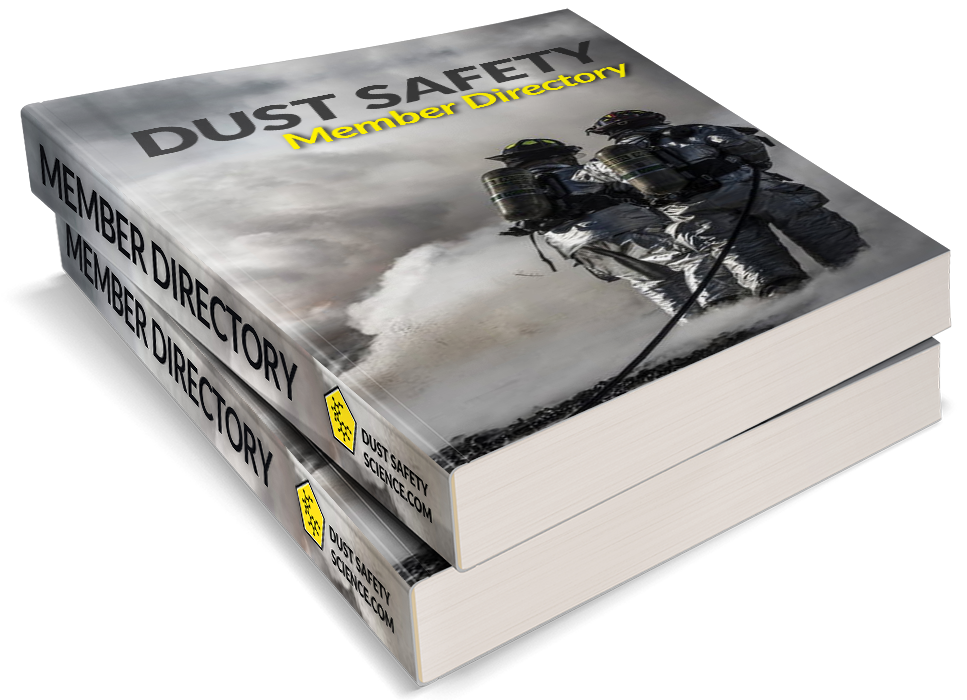Updated April 14, 2025 Authored by Dr. Chris Cloney and Jon Barrett of Dust Safety Science

Is Flour Flammable? Key Facts
- Flour is flammable when dispersed as a dust cloud in the open air.
- Fine flour particles can ignite in seconds when they mix with oxygen and are near a heat source.
- Flour particles and heat combustion may cause explosions and flash fires.
- Food processing plants are at greater risk of dust explosions caused by flour.
Be safe from any disaster involving flour explosions.
TABLE OF CONTENTS
Is Flour Flammable? Key Facts
Does Flour Explode in the Microwave?
What Other Food Dust Explodes?
Mitigating the Risks with Flour Dust
Common Questions About Flour Being Flammable
Conclusion
Flour, a kitchen staple, a product of food process manufacturing, and a versatile ingredient in cooking and baking, may seem innocuous at first glance. However, its flammability is a lesser-known but crucial aspect to consider. Flour and many other carbohydrates become explosive when dispersed into the air as dust. Like any organic matter, flour is combustible if ground down finely enough and is problematic in flour mills, a grain elevator, and food processing. If the concentration of airborne flour dust is just right and the dust is in a confined area, a simple spark could cause a chain reaction and a large explosion. Flour particles, when dispersed in the air in sufficient quantities, can form explosive mixtures that are highly flammable. These airborne particles can ignite with a spark or flame, leading to combustion and potentially causing a fire or explosion.
Other combustible materials and products, such as paper, wood, metal, coal, plastic, cotton, and rubber, that may combust in powdered form are extensive and include a wide range of materials. Some materials, such as zinc or potatoes, are not combustible in larger pieces but can be when pulverized to fine dust. Coal is both combustible in bulk material and as coal dust. The US Occupational Safety and Health Administration (OSHA) maintains a comprehensive list of combustible materials.
The NFPA 654 Standard for the Prevention of Fire and Dust Explosions from the Manufacturing, Processing, and Handling of Combustible Particulate Solids provides guidance on combustible dust suppression and dust control. The NFPA 654 Standard is referenced by OSHA’s Combustible Dust National Emphasis Program (NEP) to identify dust hazards and define mitigation strategies that help protect life and property. The standard provides industry-recognized safety practices for flour mills, facility and systems design, process equipment protection, fugitive dust control and housekeeping, ignition source identification and control, fire protection, training and procedures, inspection, and maintenance. The NFPA also specifies using explosion-proof equipment and anti-static tools and equipment and materials for handling dust, from static electricity issues.
The OSHA in the United States defines combustible dust as “a solid material composed of distinct particles or pieces, regardless of size, shape, or chemical composition, which presents a fire or deflagration hazard when suspended in air or some other oxidizing medium over a range of concentrations. Understanding these characteristics is vital for identifying dust hazards, managing the risks associated with explosive dust, ensuring workplace occupational safety and compliance, and preventing a combustible dust explosion.
Flour is Combustible and is an Explosion Hazard
The phenomenon of flour exploding primarily stems from the presence of finely dispersed particles in the air. When flour is handled, processed, or disturbed, during mixing or pouring, at flour mills and other food processing facilities, this process can release fine dust particles into the surrounding environment. If the concentration of flour particles in the air reaches a critical level and encounters an ignition source, such as a spark or flame, then it can lead to a rapid release of energy, and a flour explosion occurs. A confined space, such as a dust collector or HVAC ductwork, with layers of flour dust increases the explosion potential.
Factors such as particle size, humidity levels, and the presence of other combustible materials can influence the likelihood and severity of an explosion. Determining the combustibility of dust present in your facility requires professional evaluation through laboratory testing. This process involves igniting a sample of the dust in a controlled environment and analyzing key parameters to assess the potential explosion risks. The Minimum Explosive Concentration determines the minimum quantity of dust required when dispersed, to form a flammable atmosphere.
Two critical elements of this analysis are the Kst value and the Pmax value. The Kst value measures the severity of an explosion that could occur if the dust ignites, taking into account factors such as particle size, shape, and moisture content. Meanwhile, the Pmax value indicates the maximum pressure generated by a potential dust explosion.

Does Flour Explode in the Microwave?
While flour is indeed flammable, the risk of it exploding in a microwave is relatively low compared to other cooking methods. When flour is exposed to high temperatures in a microwave, it can heat up and potentially ignite if exposed to a spark or flame. However, the enclosed nature of the microwave and the absence of open flames or sparks typically mitigate the risk of a flour explosion. Nevertheless, caution should still be exercised when using flour in microwave cooking, and any signs of smoke or burning should be addressed immediately to prevent a fire.
What Other Food Dust Explodes?
Flour is not the only food ingredient that poses a risk of explosion when dispersed as particles into the air. Several other food items, particularly those with high carbohydrate or sugar content, can also exhibit flammable properties under certain conditions. Sugar, for example, is another common kitchen ingredient that can form explosive dust clouds when finely ground and dispersed. Other food items known to explode in dust form include powdered milk, cocoa powder, and starches such as cornstarch or potato starch. Like flour, these explosive dusts and substances can ignite when exposed to a spark or flame, leading to potentially dangerous flour explosions, in flour mills.
Mitigating the Risks with Flour Dust
To minimize the risks associated with flour and other flammable food dust, preventive measures should be implemented. In industrial settings such as bakeries or food processing facilities, proper ventilation systems should be in place to control airborne particles and reduce the likelihood of flour explosions. Regular cleaning and maintenance of equipment can also help prevent the accumulation of dust. In bakeries and kitchens, people should avoid creating excessive dust when handling flour or other dry ingredients and promptly clean up any spills or messes to minimize the risk of fire or flour explosions. Using explosion-proof equipment and anti-static tools and equipment and materials are also required.
FAQs About Flour Being Flammable
What is the ignition temperature of flour dust?
Flour dust’s ignition temperature depends on the type and particle size, usually ranging from 400-500°F. When a cloud of flour dust is suspended in the air at this temperature, it may catch fire when exposed to a heat source. This situation is dangerous in certain environments, such as food processing plants and other enclosed spaces.
How can flour dust explosions be prevented?
Prevent dust deflagration or explosion by:
- Implementing proper ventilation so flour dust won’t accumulate in the air.
- Regularly cleaning the entire workspace to reduce settled dust on surfaces.
- Using explosion-proof equipment, especially in food processing plants where you handle large amounts of flour.
- Eliminating or minimizing the presence of ignition sources, such as open flames.
- Installing dust collection systems to get rid of airborne particles.
These preventive measures can break the combustion process, leading to explosions and rapid burning.
Does flour explode in the microwave?
On normal days, flour doesn’t explode in the microwave. You have to throw flour near a heat source to create a cloud of dust that may ignite. Flour may burn rapidly if you overheat it in a dry container.
Why is flour so flammable?
Flour easily burns because it’s finely ground, which increases its surface area and makes it burn fast when dispersed in the air.
Conclusion
Flour, a common ingredient in the food industry, poses significant fire and explosion hazards due to its fine flour dust particles. Flour dust is a type of combustible dust that can lead to flour dust explosions when suspended in the air as a dust cloud. In flour mills, the grinding process produces flour dust particles that can accumulate and form a flour dust cloud. If this dispersed dust encounters an ignition source, such as electrical equipment, static electricity or hot surfaces, flour dust explosions can occur.
The NFPA highlights the risks associated with combustible dust and flour dust production in the food industry, emphasizing the need for explosion-proof equipment and proper dust collection systems. A flour dust explosion can be triggered by various factors, including confined spaces, storage bins, and bucket elevators, where dust accumulation over a surface area is common.
In industrial environments and in a flour mill, the presence of excess combustible dust and fine particles from flour processing and flour production can create an explosive atmosphere and dust cloud and, as a result, at risk of flour explosions. Safety personnel need to identify potential hazards and implement intrinsically safe equipment, which are crucial steps in mitigating the risk of flour dust explosions, to prevent flour dust explosions. Proper flour dust collection and maintaining clean, safe workspaces from excess dust help prevent rapid combustion and chain reactions that lead to a dangerous flour dust explosion. Using explosion-proof equipment and anti static tools and equipment and materials are also required to prevent flour explosions. Understanding the risk of flour explosions, explosive dusts, and combustible materials, and taking preventative measures, are essential for safety in flour mills and grain elevators.
Enhance workplace safety for all employees, join our training!
About Dust Safety Science
For more from Dr. Chris Cloney on Dust Suppression, visit this podcast episode: Dust Explosion And Combustion Test Methods With Dr. Ashok Dastidar.

Resources:
Visit Dust Safety Science (Global Incident Tracking)
Visit Dust Safety Academy (Resources, Training, and Events)
Visit Dust Safety Professionals (Need Help? Get Support Today!)
Visit Dust Safety Journal for the Complimentary, Dust Safety Science Monthly Journal
Subscribe to our Complimentary, Dust Safety Science Newsletter at Dust Safety Science Newsletter
Visit the Dust Safety Science blog for written articles on dust safety including the latest research, expert opinions, and state-of-the-art in fire and explosion protection.
